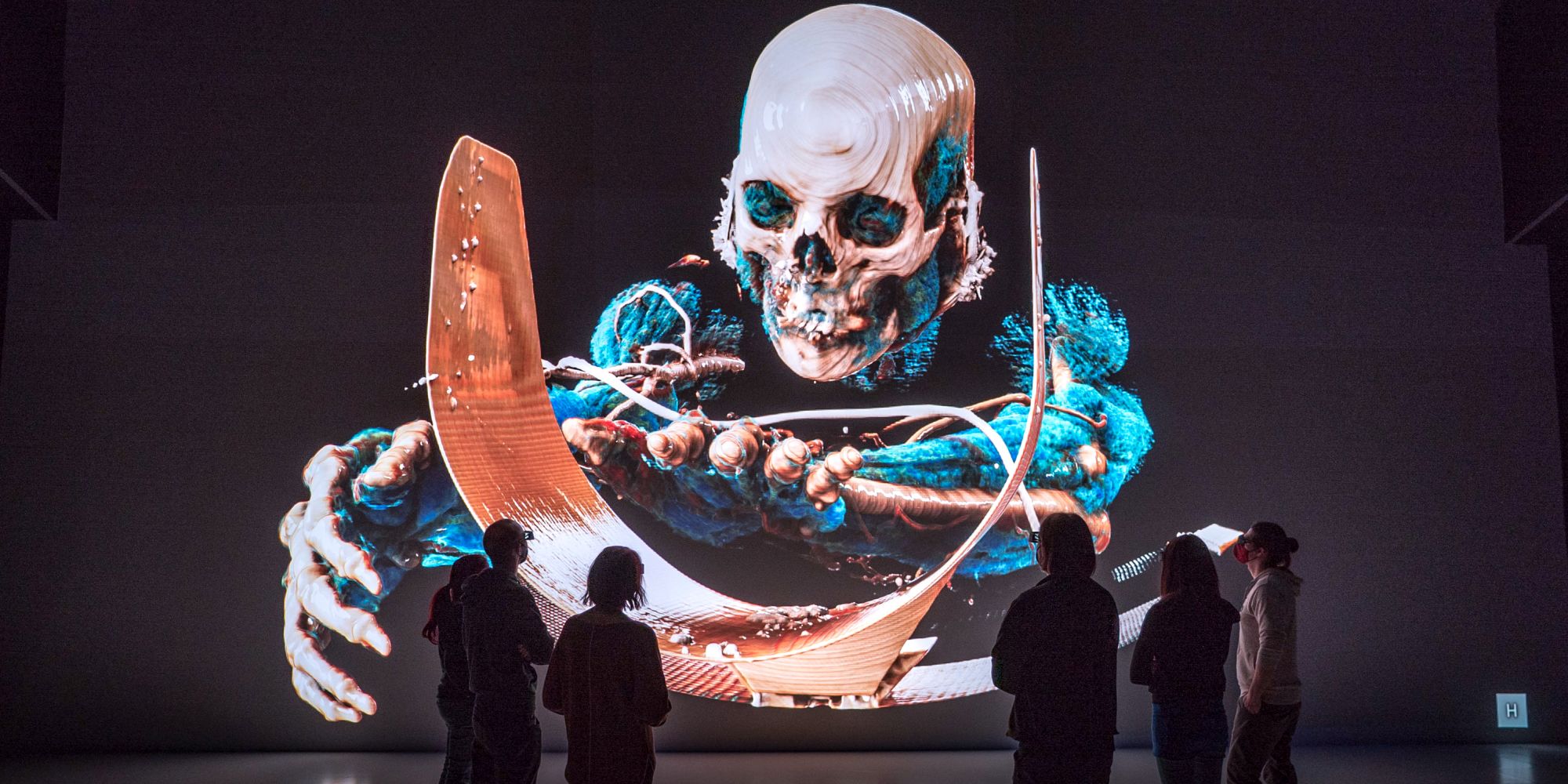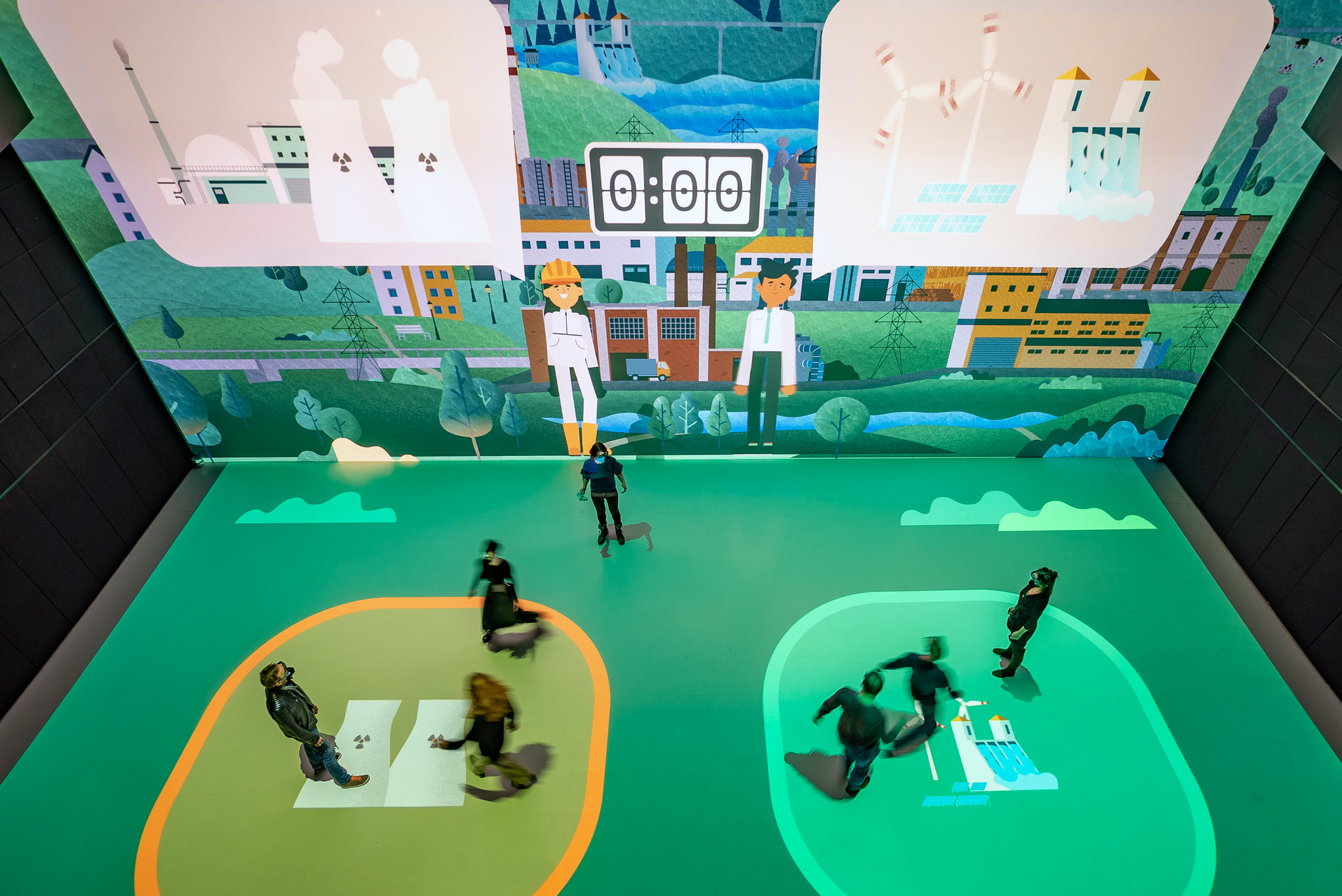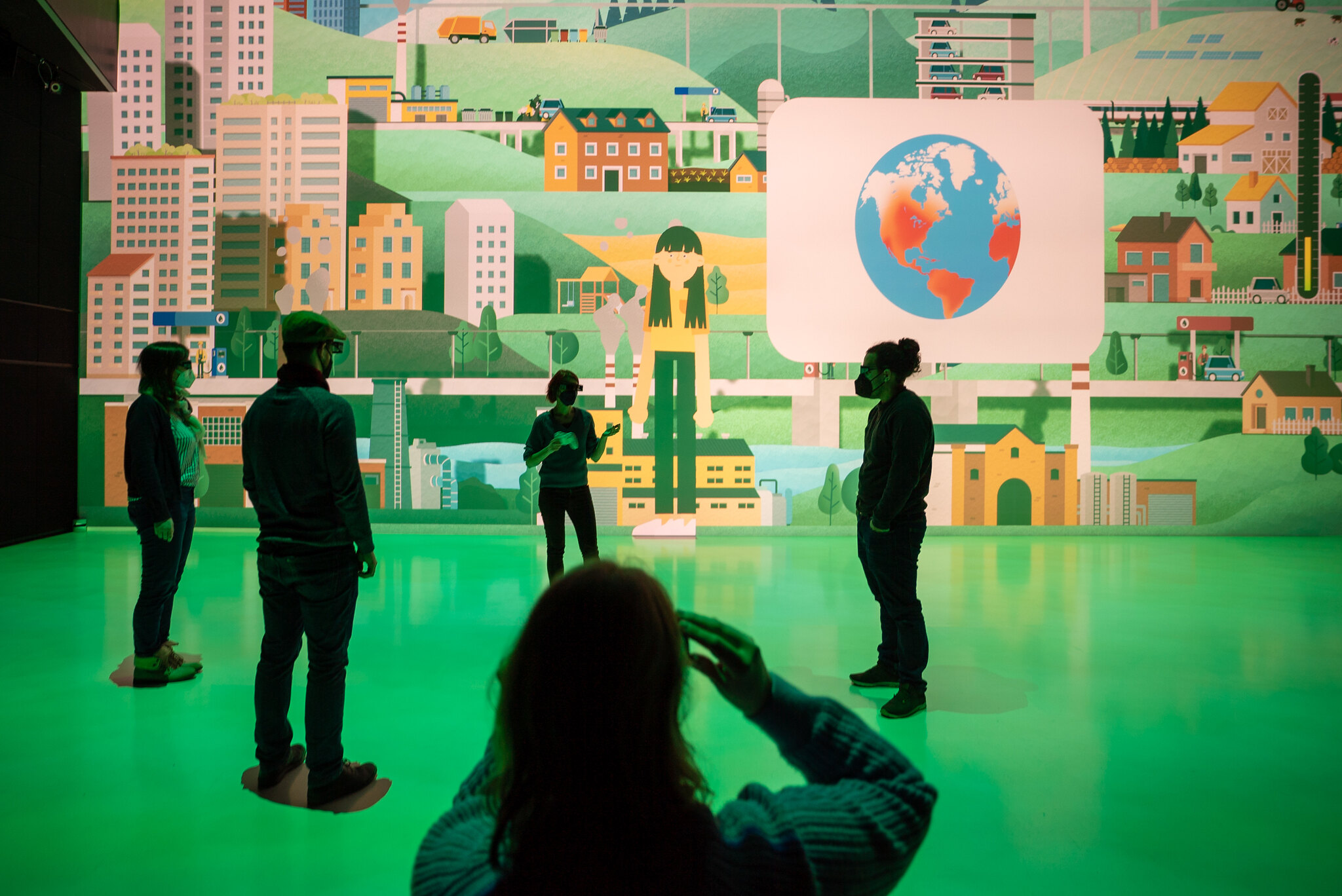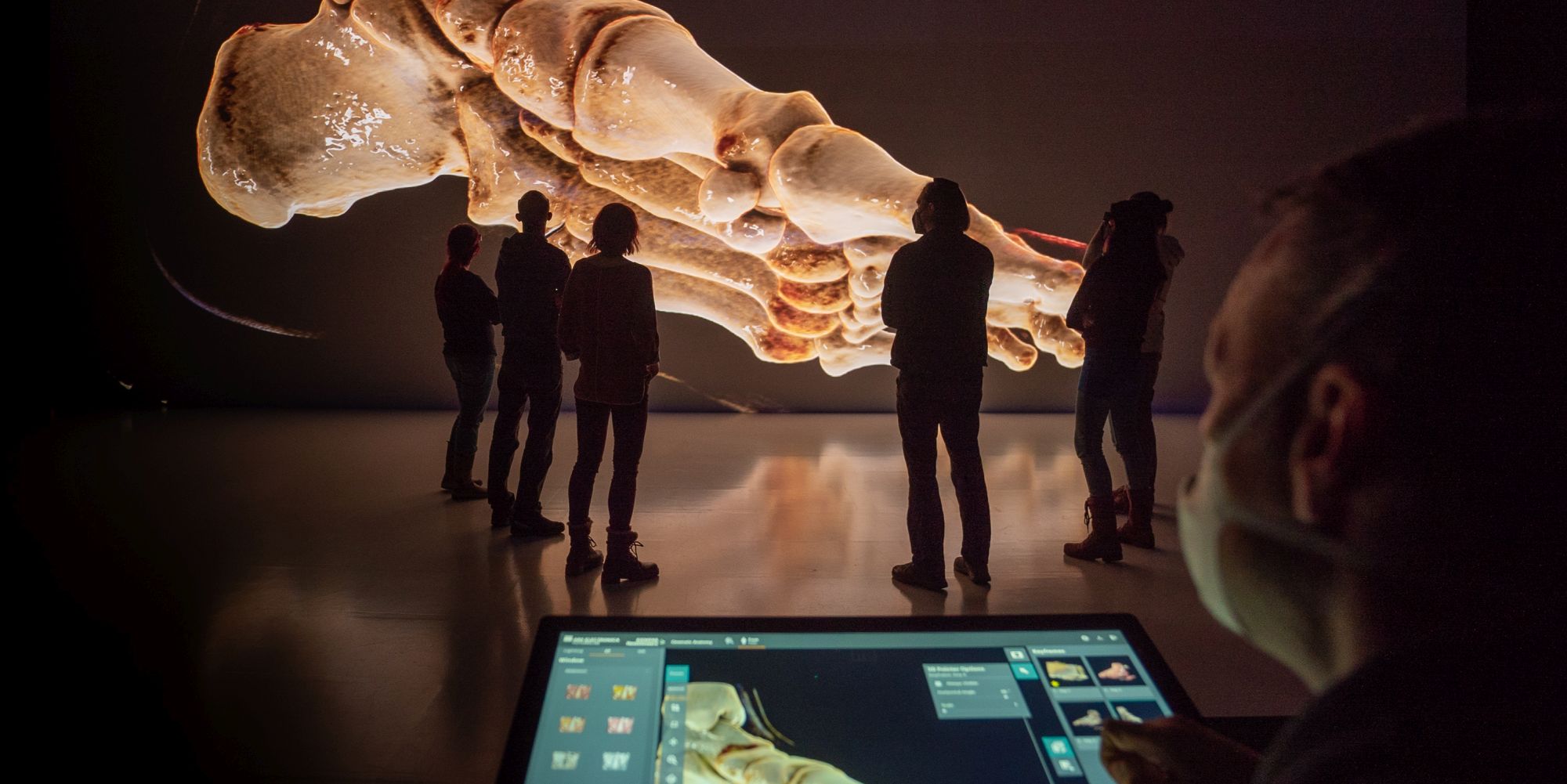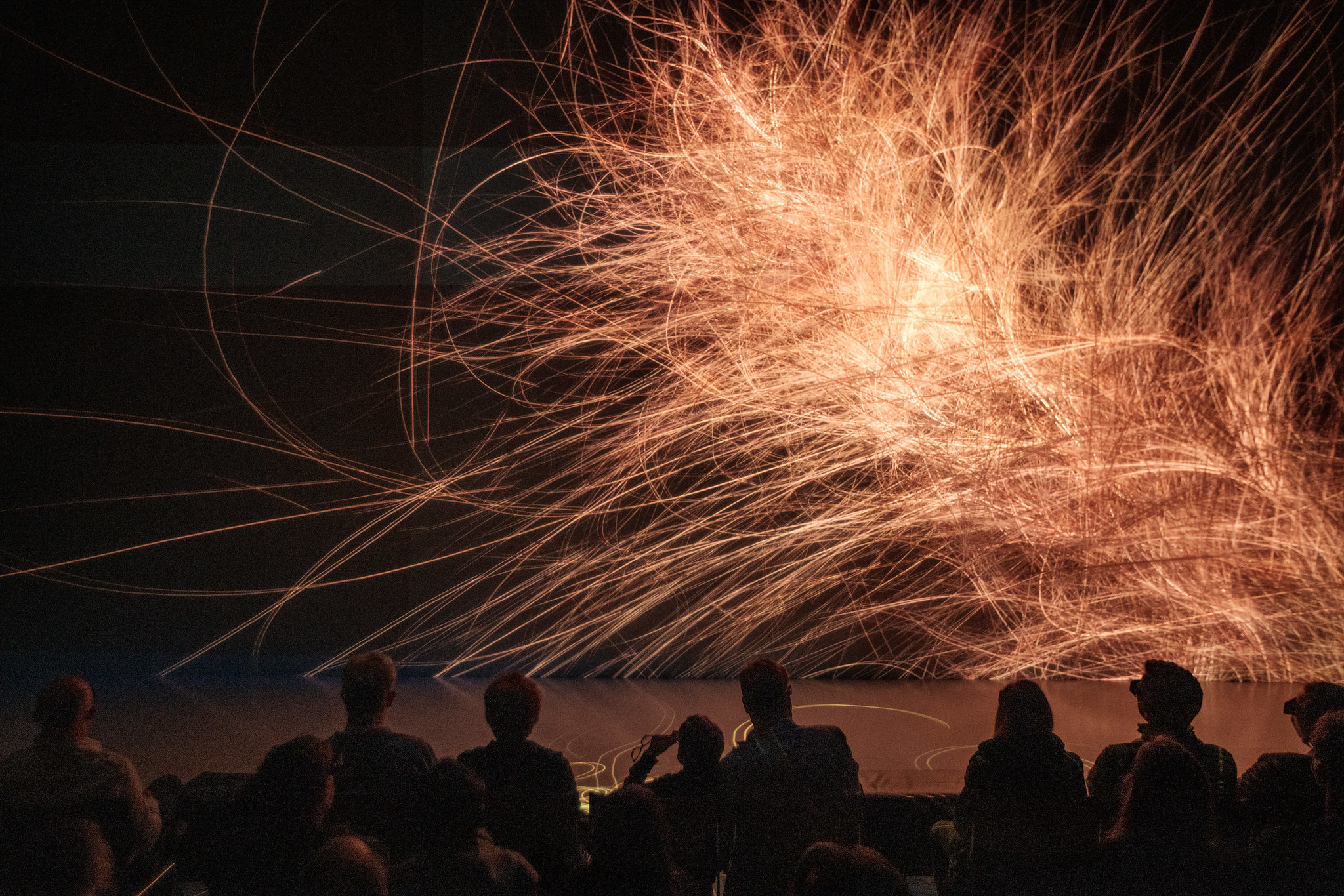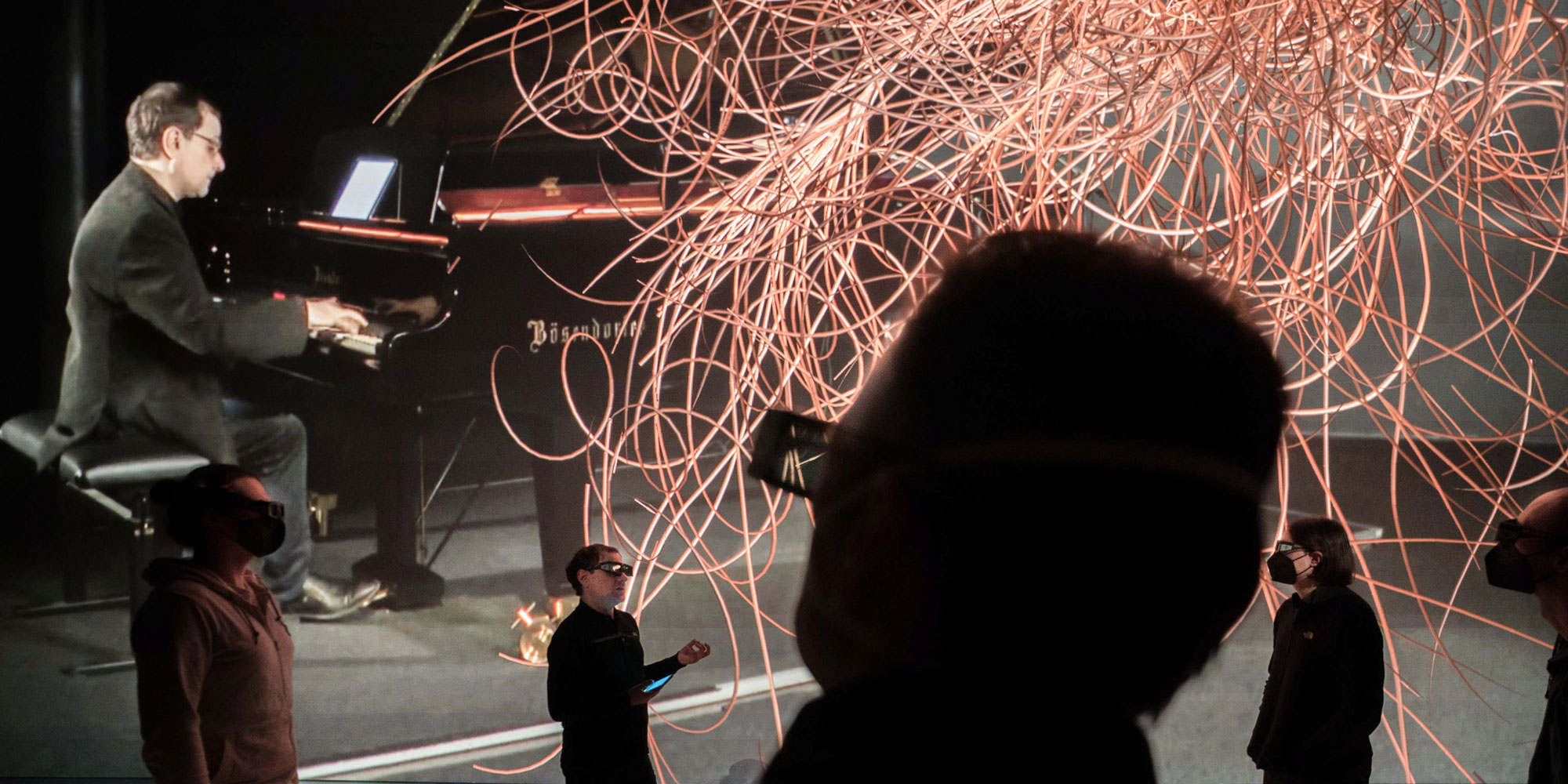Three visually stunning dimensions, over 50 million pixels of resolution, and a high-performance tracking system make Ars Electronica’s Deep Space 8K one of the world’s most exciting digital experience spaces – developed, built, and continuously maintained by the Ars Electronica Futurelab.
Deep Space EVOLUTION brought several new programs to the public in 2022, as well as a major upgrade to the technical infrastructure – enabling even more brilliant images with lower energy consumption. In addition, several new programs for the audience were presented.
The novel CAVE set the starting point for immersive 3D environments at Ars Electronica in 1996. The Ars Electronica Futurelab spent years developing the first Deep Space, which was presented to the public for the first time at the Ars Electronica Center in 2009. Since then, the virtual 3D experience space has been continuously maintained and expanded by the lab in terms of both hardware and software. Eight projectors, each with a pixel rate of 4096 x 2160 calculated 120 times per second, provide the 16-by-9-meter wall projection and the equally large floor projection with unique worlds of experience.
New technology
With Deep Space EVOLUTION, new laser projectors instead of lamps now provide even sharper images with the highest brilliance: they display a larger color space, but no longer have to be cooled as much – as a result, they are much quieter and require 32 percent less energy. In addition, the laser projectors eliminate the need to regularly replace lamps that contain heavy metals. The seven Deep Space 8K workstations have also been technically upgraded: 200 percent more computing power is now available, while energy consumption is reduced by ten percent. Two new graphics cards per computer replace the previous four, which reduces power consumption by around 40 percent.
The tracking system used in Deep Space 8K has also received a significant upgrade. Previously, the 2D tracking of the Futurelab system pharus could be used to determine the position of any number of people or objects on the ground with extreme precision. Now, the room also has a 3D tracking system that can detect people and objects in any position in space. The combination of these systems opens up new possibilities for interactive audience programs and artistic programs by the Ars Electronica Futurelab and external partners. The new tracking system is already being used in the lab’s virtual production system Deep Virtual.
The control and operating system has also been enhanced with Deep Space EVOLUTION: Updated software brings more security and reliability, a new content management system opens up new features, and presenters can now access a simplified control interface on their smartphones. 3D content development now relies on the Unreal Engine, which is also used by the world’s leading game productions. The license management for content packages has also made it from prototype to product maturity: Content from Deep Space 8K can now be easily distributed to partners and customers worldwide. This system is already partly in use at JKU medSPACE at the MED Campus Linz of Johannes Kepler University and at Cubo Negro in the Centro de Ciencias in Culiacan, Mexico.
New Programs
Deep Space EVOLUTION also brought new programs, including several developments by the Ars Electronica Futurelab:
In Welcome to Planet B, visitors discover our common path to the climate goal, with an expedition to various climate scenarios in the year 2100 that’s as entertaining as it is educational. With Sounding Letters, they enjoy a virtual piano concert in 3D, composed with the help of artificial intelligence. With the upgrade of Cinematic Anatomy x Deep Space, the audience gains new insights into human anatomy. The program is now also being used successfully at the medical university Johannes Kepler University Linz in JKU medSpace.
In addition to these in-house developments, the Ars Electronica Futurelab team ported other programs from external developers and artists to Deep Space EVOLUTION: The latest version of the planetarium program Uniview takes visitors on a journey to auroras, far-away solar systems with exoplanets, a pulsar, a black hole, the James Webb Space Telescope and much more. Transient – Impermanent Paintings by artists Quayola/Seta uses an algorithm to combine hyper-realistic digital brushstrokes and piano tones to create fascinating synesthetic landscapes.
The work of the Ars Electronica Futurelab demonstrates the possibilities offered by Deep Space EVOLUTION: Through the interplay of cutting-edge hardware and software components with immersive program highlights, Deep Space 8K once again offers incomparable experiences, a stage for science, a digital research environment for VR experiments and a creative free space for art.
Read all about Deep Space EVOLUTION and the programs on the Ars Electronica Blog:
- That’s what the new Deep Space EVOLUTION program looks like
- Deep Space EVOLUTION: From the Cave into the Deep Space
Credits
Ars Electronica Futurelab: Friedrich Bachinger, Florian Berger, Kerstin Blätterbinder, Arno Deutschbauer, Roland Haring, Susanne Kiesenhofer, Anna Kuthan, Johannes Lugstein, Nicolas Naveau, Ali Nikrang, Maria Pfeifer, Johannes Pöll, Raphael Schaumburg-Lippe
